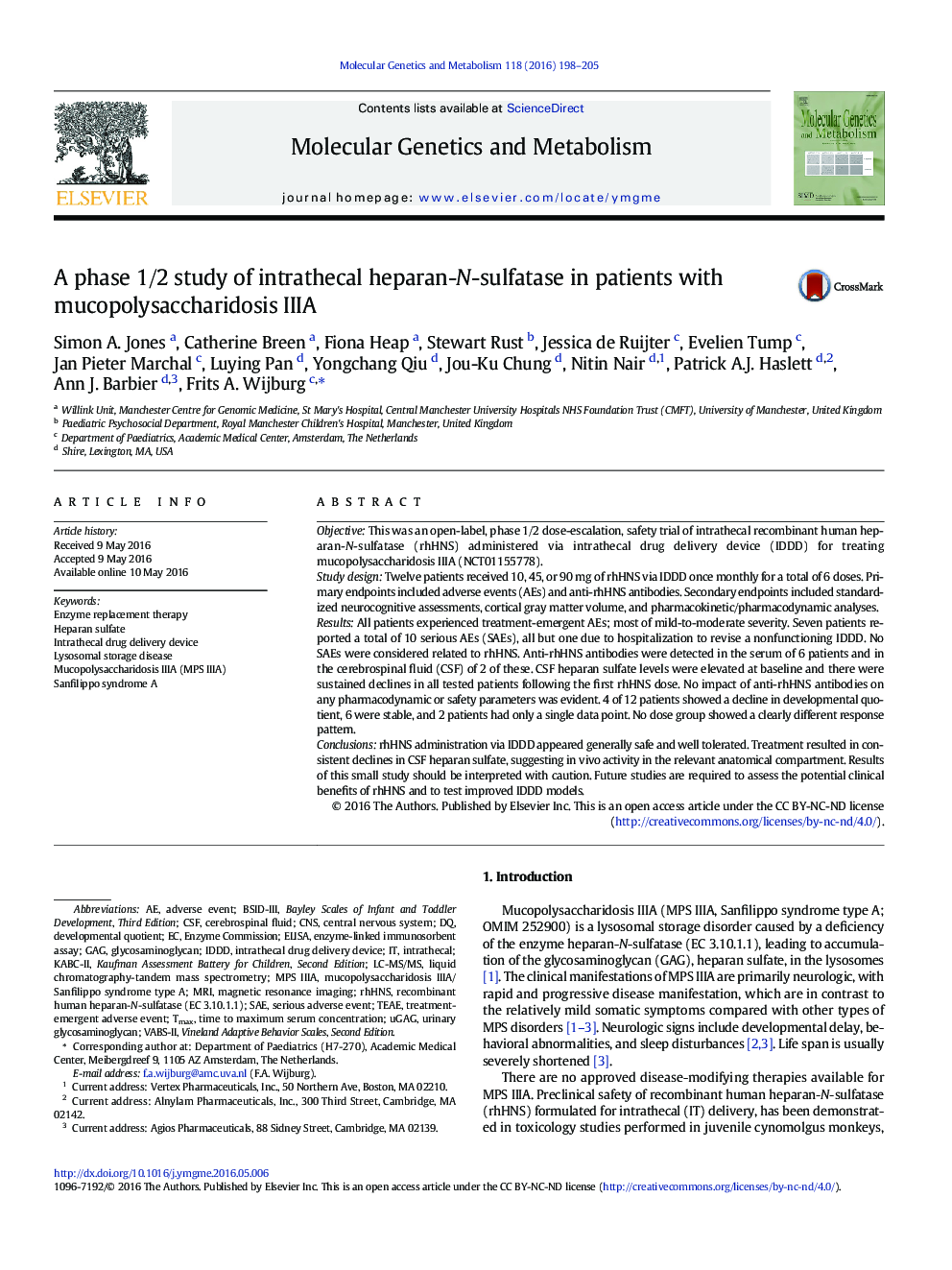| Article ID | Journal | Published Year | Pages | File Type |
|---|---|---|---|---|
| 10832498 | Molecular Genetics and Metabolism | 2016 | 8 Pages |
Abstract
rhHNS administration via IDDD appeared generally safe and well tolerated. Treatment resulted in consistent declines in CSF heparan sulfate, suggesting in vivo activity in the relevant anatomical compartment. Results of this small study should be interpreted with caution. Future studies are required to assess the potential clinical benefits of rhHNS and to test improved IDDD models.
Keywords
tmaxVABS-IIUrinary glycosaminoglycanuGAGSAEKABC-IIMPS IIIABSID-IIIGAGLC-MS/MSTEAEenzyme replacement therapyMRIintrathecalLysosomal storage diseaseELISAEnzyme-linked immunosorbent assayMagnetic resonance imagingCNScentral nervous systemLiquid chromatography-tandem mass spectrometryadverse eventSerious adverse eventtreatment-emergent adverse eventDevelopmental quotientCerebrospinal fluidCSFBayley Scales of Infant and Toddler Development, third editionHeparan sulfateenzyme commissionGlycosaminoglycan
Related Topics
Life Sciences
Biochemistry, Genetics and Molecular Biology
Biochemistry
Authors
Simon A. Jones, Catherine Breen, Fiona Heap, Stewart Rust, Jessica de Ruijter, Evelien Tump, Jan Pieter Marchal, Luying Pan, Yongchang Qiu, Jou-Ku Chung, Nitin Nair, Patrick A.J. Haslett, Ann J. Barbier, Frits A. Wijburg,
